New memoir presents architect Addison Mizner's life in Palm Beach, in his own words
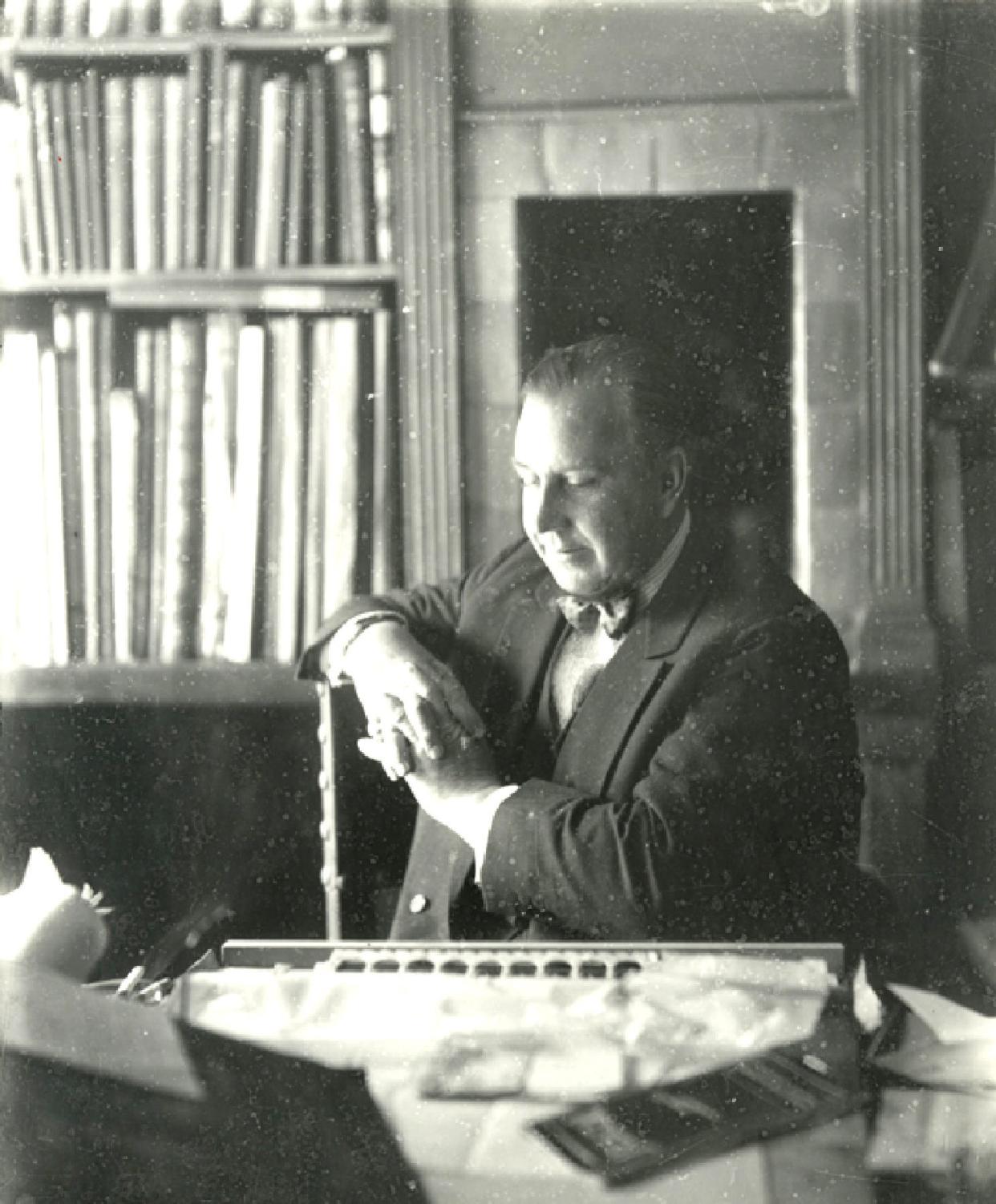
- Oops!Something went wrong.Please try again later.
- Oops!Something went wrong.Please try again later.
Listen how Palm Beach architect Addison Mizner described his strategy for dealing with pushy clients who had less-than-stellar ideas about what their new homes should look like:
“Early in life, I found a formula: never disagree with a client, but if you don’t like their suggestion, pretend you think they are great, then look thoughtful, and say, ‘Yes, I like your idea very much.’ Then pause, and say, ‘But you know, I think I like your first idea best.’ Of course, they never had a first idea in their lives.”
Mizner — the architect who in the last century’s late teens and Roaring ’20s forever stamped Mediterranean style onto the architectural fabric of Palm Beach — then recalled how he would make an “awful” sketch of the client’s architectural idea and lay it beside the one he favored.
Guess which design generally won out?
That tidbit is one of many contained in “Addison Mizner: A Palm Beach Memoir” (Pineapple Press, $26.95), a new book from the Historical Society of Palm Beach County and edited by architectural and social historian Augustus Mayhew III.
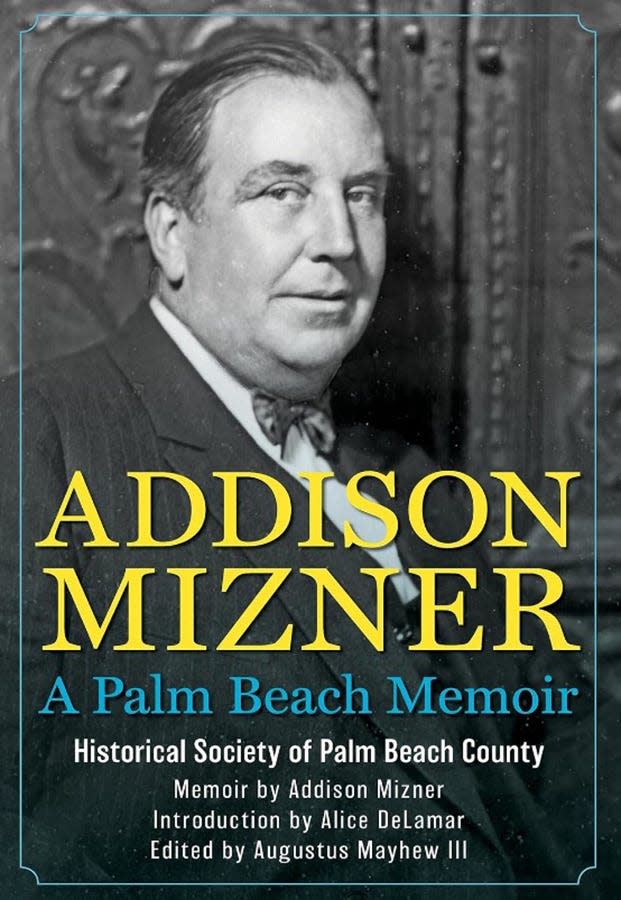
The book presents Mizner’s first-person recollections about his life and work in Palm Beach between 1918 and the end of 1924, a period when he designed dozens of houses and mansions. His portfolio also included commercial buildings and the park and fountain next to Town Hall.
As Mayhew writes, Mizner “created and inspired what is acknowledged as the Palm Beach style” — a fanciful mix of Spanish, Central American, Italian and other Mediterranean-inspired architecture.
To celebrate the book’s launch, Mayhew will sign copies of the book from 5 to 7 p.m. Wednesday at the Catherine Prevost boutique at 34 Via Mizner in Palm Beach. The event is open to the public, but reservations can be made by emailing helen@catherineprovost.com.
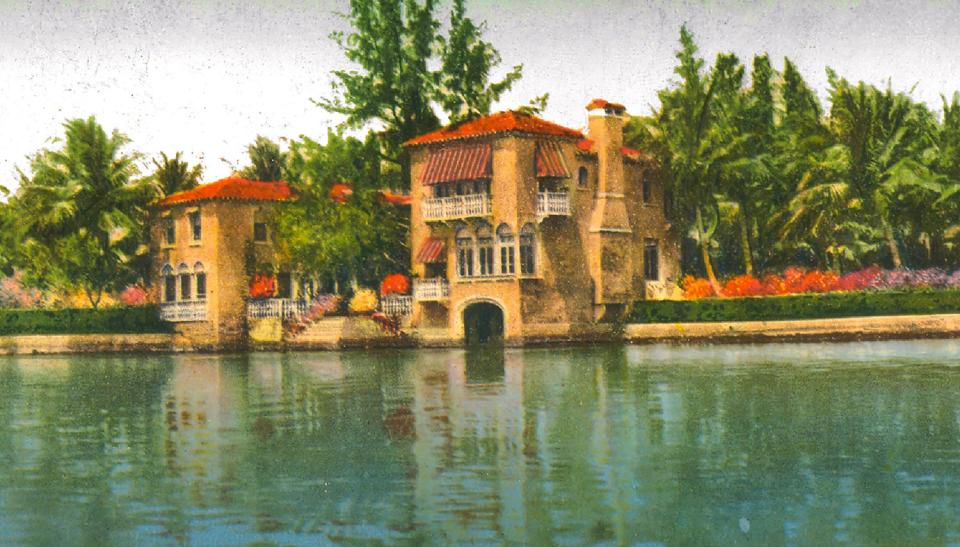
FROM THE ARCHIVES Palm Beach mayor proclaims December 'Addison Mizner Month' at Worth Avenue event
The memoir acts as a companion piece to Mizner’s 1932 autobiographical work, “The Many Mizners,” which chronicles the native Californian’s life before he moved to Palm Beach.
Mizner, who died at 60 in 1933, never completed his “follow-up narrative,” as Mayhew describes the memoir in his foreword to the book. Instead, the original unfinished — and unedited — manuscript ended up for safekeeping in the hands of one of Mizner’s Palm Beach patrons and closest friends, the late mining heiress Alice DeLamar. The historical society eventually accessioned the unpublished manuscript from Mizner’s estate in the 1960s.
DeLamar’s essay, “Remembering Addison,” is included in the book as its introduction. Mayhew wrote the foreword and afterword and compiled the book's architectural timeline of Mizner’s work. He worked closely on the project with Chief Curator Debi Murray of the historical society.
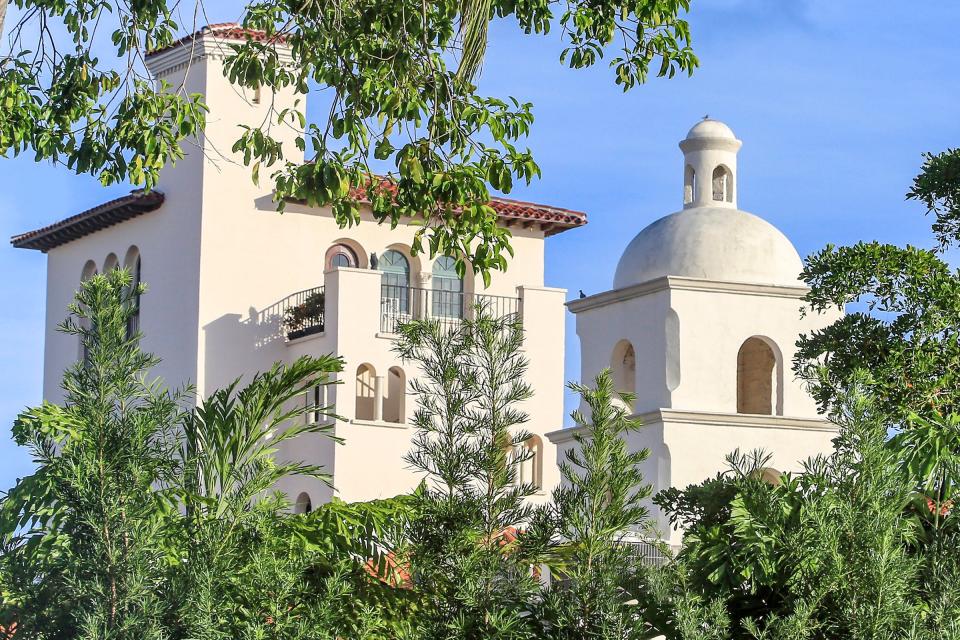
FROM THE ARCHIVES: Exhibition shows how Addison Mizner changed the Palm Beach lifestyle
The memoir chronicles Mizner’s friendship and business relationship with sewing-machine heir Paris Singer, for whom the architect designed his first commission in Palm Beach, the building that became The Everglades Club on Worth Avenue. It also covers the architect’s founding of Mizner Industries, which produced building materials, pottery, stonework, furnishings and other items for his and other architects’ projects.
Along the way, the memoir is peppered with plenty of Mizner’s memories about specific Palm Beach projects, the clients who funded them, the friends he made in Palm Beach and his travels. A popular dinner guest with abundant charm, Mizner was celebrated for his no-holds-barred and sometimes biting wit, which is on full display in the memoir. “No Mizner has ever had to think what to say in a crisis,” the architect wrote at one point. “It was trying not to say it that came hard.”
The memoir ends in 1924, the year before Mizner and a group of investors founded Mizner Development Co. with the goal of building a resort town from scratch in Boca Raton. The ambitious plans famously failed — derailed, in part, by the Florida land bust and a harsh 1926 hurricane — and left Mizner's finances in tatters by the late 1920s.
Mayhew is the author of two collections of historical and cultural essays — “Palm Beach: A Greater Grandeur” (2016) and “Lost in Wonderland: Reflections on Palm Beach” (2012). He has written for the Palm Beach Daily News, is a featured columnist at the New York Social Diary and has lectured and curated exhibitions about Mizner.
In an exclusive interview with the Palm Beach Daily News, Mayhew discussed Mizner’s memoir and what he learned about the architect while editing it.
*
Q. What do you think readers will most enjoy about the book?
Augustus Mayhew: I hope they will enjoy listening to Mizner tell his own story, hearing him offer his perspective, rather than reading someone else’s judgments of him.
Q. What was the actual editing process like?
A. As a graduate of the posh Spence School, Alice DeLamar’s introduction to the memoir was originally written with dense and lengthy, though diagrammable, sentences with verbs following nouns and very little punctuation.
Mizner’s memoir was dictated to a secretary, spoken in a progression of phrases, and it appears he most often did not know exactly where the thought was heading. His text was later punctuated by a secretary, who did not always get the drift of what Mizner was actually talking about.
Throughout, Mizner’s voice was always clear, although sometimes the subject of his sentence was buried three or four lines into the monologue. Having a theater background, I approached the text as a script for a one-man stage show. Also, Spanish is my first language, and knowing Mizner learned Spanish at an early age, studying it in Central America and Spain, I am aware that spoken Spanish is often more of a series of expressions rather than sentences.

Q. You were certainly well versed in Addison Mizner history before you started working on this book. What did you learn about the architect that especially resonated with you?
A. How much Addison’s concern and compassion for his family, niece Ysabel, nephew Horace and his brother Wilson guided so many of his actions, as did the welfare of friends and those who collaborated with him.
However stifling the setback or misfortune, Mizner persevered. He kept on keeping on, never giving in to physical limitations or health complications. I especially sensed the strength of Mizner’s family ties when he never flinched or backed away while taking care of Wilson during his excruciating withdrawal from drug addiction.
Q. Anything else?
A. With Mizner’s style of refined resort architecture snubbed and disparaged for the most part of the post-WW II era — especially led by New Yorker writer Alva Johnston’s travesty, where he described Mizner as no more than a “junkman” — I was encouraged by how every 1920s architectural journal featured and praised his work. He was first registered as an architect in 1895. San Francisco and Los Angeles architectural associations tapped Mizner to their Hall of Fame in 1926, filling one of their journals with his Palm Beach works.
Q. Mizner was certainly dedicated to his craft. What do you think may surprise readers who might think of him, erroneously, as simply a gadabout or dilettante?
A. His indefatigable dawn-to-dusk work ethic, where he engaged in every aspect of his commissions, whether executing conceptual watercolor sketches, drafting detailed plans or measuring door widths at construction sites. He earned the respect of Social Register swells just as he garnered the admiration of plumbers, painters and stonecutters. In 1923, he had 16 sizable commissions and the Gulf Stream Golf Club, as well as operating Mizner Industries, which was on its way to becoming Palm Beach County’s largest industry.
Q. What does the memoir add to the scholarship surrounding Mizner?
A. Addison Mizner coffee-table books found on many bookstore shelves are composed primarily of contemporary color photographs of Mizner’s interiors and exteriors, customarily presented without delineating between Mizner’s original efforts and the work of other architects who designed additions and alterations. In many of those books, which focus mostly on the architecture and the renovated interiors, any biographical information is secondary and subject to the whims of a variety of sources.
The memoir is very different. It does, however, feature more than 100 black-and-white photographs depicting original interiors and exteriors of houses Mizner designed before decades of structural and aesthetic changes. Endnotes and a detailed index, lacking in his earlier autobiography, give readers a more dimensional understanding of the personalities and incidents that Mizner narrates.
The memoir not only shows readers that Mizner’s talent and skills went far beyond a house’s design but also that he was expert in all elements of construction. The anecdotal history, too often repeated, which deprecated his genius, was not shared by his contemporaries. Charles Munn, known as “Mr. Palm Beach,” recalled Mizner in a 1960s interview in the New York Daily News. “Mizner was more than an architect,” Munn said. “He was an authority on life and how it should be lived. He enriched the lives of people with whom he dealt, of all those able to appreciate him.”
Q. Fans of Mizner’s work owe a lot to Alice DeLamar, don’t they?
A. Upon Mizner’s return to Palm Beach in 1927 after the collapse of his Boca Raton project, Alice funded and produced a commemorative book of Mizner’s Palm Beach works titled “The Florida Architecture of Addison Mizner,”published in 1928, written by Ida Tarbell with an introduction by Singer and photographs by F. E. Geisler. DeLamar drove Geisler around Palm Beach in a pick-up truck with his camera set on a tripod in the open cargo bed. “My de Medici,” proclaimed Mizner about DeLamar.
She not only saved a record of Mizner’s houses before they were modified or demolished but also for his memoir.
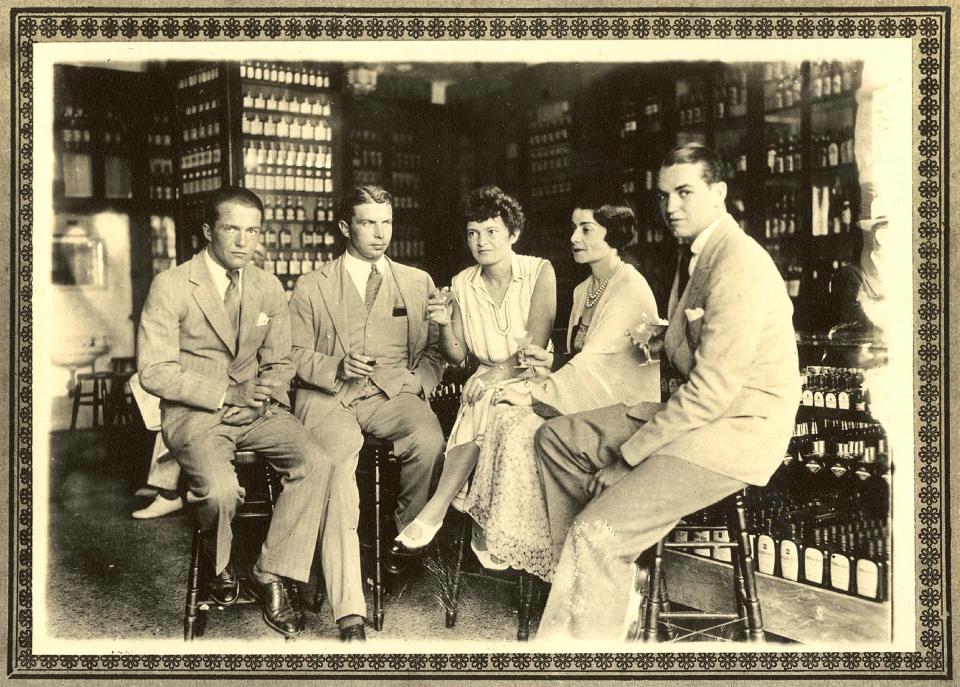
Q. Can you give us a couple of your favorite anecdotes from the book?
A. Readers who follow Palm Beach’s election process will appreciate Mizner’s unorthodox campaign to elect builder Cooper Lightbown the town’s mayor and the lengths he and brother Wilson employed to safeguard an accurate vote count.
There’s also an account of the ultimate Palm Beach dinner party: When Mizner’s guest of honor and potential investor arrived in a limo passed out with an empty flask, the architect — like any good Palm Beach host — had him carried in and propped up in a chair. The resulting uproarious decorum makes for a madcap Palm Beach night to remember.
RECENTLY PUBLISHED: Preservation Foundation of Palm Beach debuts children's book about architect Addison Mizner
*
Darrell Hofheinz is a USA TODAY Network of Florida journalist who writes about Palm Beach real estate in his weekly “Beyond the Hedges” column. He welcomes tips about real estate news on the island. Email dhofheinz@pbdailynews.com, call 561-820-3831 or tweet @PBDN_Hofheinz.
This article originally appeared on Palm Beach Daily News: New Memoir: Celebrated Architect Addison Mizner's life in Palm Beach

